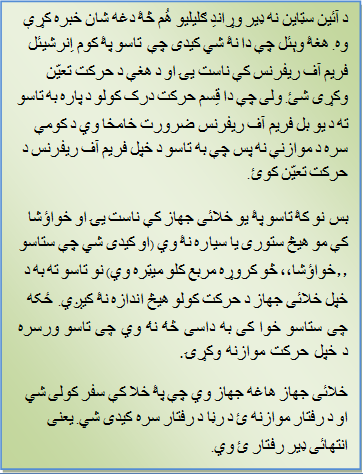Question 1: State Einstein’s postulate of special theory of relativity. Discuss its results.
ANSWER
Postulates of Einstein’s Special Theory of Relativity
Einstein put forward his famous special theory of relativity in 1905. Special theory of relativity deals with the bodies moving with constant velocity with respect to each other. It consists of the following two postulates of Modern Physics.
| (A postulate is a statement that is accepted to be true without proof). |
Principle of relativity
- The laws of Physics are the same in all inertial frames of reference.

Galileo stated this principle for the first time long before; though in some different words. He said that it is impossible to perform an experiment in an inertial frame of reference and detect the motion of the frame of reference. Because it is possible only when you refer to some frame of reference for comparison.
-
Principle of constancy of light:
The speed of light “c” in vacuum is the same in all inertial frames of reference regardless of the motion of the source or observer.
(Remember speed of light is constant in a vacuum = 3 × 108 m/s. In matter having a refractive index, it is lower).
Results of special theory of relativity
Special theory of relativity has the following interesting results.
(1)The relativity of simultaneity
If an observer judges two events to be happening at the same time, it is not necessary a second observer, in another frame of reference with some relative motion, also have the same observation. S/he may observe the same two events to be happening in different times.
Thus to say that two events are simultaneous depends upon the position of the observer. This is called “the relativity of simultaneity”.
اگر دو واقعات ایک ریفرنس فریم میں ہو رہے ہیں۔ اوراسی فریم میں ایک بندہ ان واقعات کو دیکھ رہا ہے۔ اور اس کا مشاہدہ یہ ہے کہ دونوں واقعات ایک ہی لمحے میں ہوۓ۔
اگر ایک دوسرا بندہ کسی دوسرے ریقرنس فریم سے ان دونوں واقعات کو دیکھ رہا ہے۔ تو ضروری نہیں کہ پہلے بندے کی طرح وہ بھی دیکھیں کہ دونوں واقعات ایک ہی لمحے میں واقع ہوۓ۔ بلکہ ہوسکتا ہے کہ وہ یہ دیکیھں کہ دونوں واقعات الگ الگ وقتوں میں ہوۓ۔
دونوں بندوں کے مشاہدوں کا انحصار اس بات پر ہوگا کہ دونوں ریفرنس فریم ایک دوسرے سے کس رفتار سے دور جا رہے ہیں۔
اس کو ریلٹیویٹی آف سایملٹینیٹی کہتے ہیں۔
وضاحت کے لیے اپنی کتاب میں ٹرین والا مثال دیکھیں۔
(2) Increase in mass
Mass of the body increases when it is moving with relativistic velocity. (Relativistic velocity means very high velocity; comparable with the velocity of light). If m0 is the mass of the body at rest, v is the relativistic velocity of the body, c is the velocity of light, then the relativistic mass m of the body is given by the equation

Since v/c must have some value less than 1, therefore, the denominator in the RHS of the above equation is less than 1. Consequently, m > m0.
See concept problem on increase in mass, Einstein postulate.
(2) Length contraction
The length of a body appears to be decreasing to an observer when it is moving with relativistic velocity.
Let l0 is the length of a body at rest, v is its relativistic velocity, c is the velocity of light, then the corresponding relativistic length l of the body is given by

This sort of length contraction is called Lorentz length contraction. However, for ordinary velocities of our daily life this is negligible.
(3) Time dilation
Let t0 is the proper time of an event (proper time is the time taken by an event in its rest frame, i-e, relative velocity is zero). This time interval increases for an observer when the frame is moving with relativistic velocity with respect to him/her. Let t is the time noted by this observer, then

Here t0 is the time taken by the event when it is at rest w.r.t the observer, t is the time taken for the event when its frame of reference moves with a relativistic velocity v w.r.t the observer and c is the speed of light.
From the above equation, we see the time t taken by the event in the different frame of reference increases.
(4) Speed of light as the limiting speed
The mass of a body moving with a relativistic velocity is

If the body is moving with the velocity of light then v = c. Put this in the above equation

This means the mass of the body will become infinite when it is moving with the velocity of light. Consequently, an infinite amount of energy will be required to move the mass (with the velocity of light). So, it is impossible to move a body with the velocity of light. Therefore, speed of light is the limiting speed.
(5) Mass-energy relation
Einstein showed that E = mc2. Put the value of relativistic mass. This shows that mass and energy are inter-convertible at relativistic level. Thus we conclude that mass is a form of energy like sound, heat etc.
In the case of special theory of relativity, the laws of conservation of energy and mass are replaced by the law of conservation of mass-energy.

Pingback:Features of Black body radiations and Planck’s quantum theory … msa – msa
Pingback:history-of-modern-physics-for-f-sc-students – msa
Pingback:long-questions-ch-18-p12 – msa